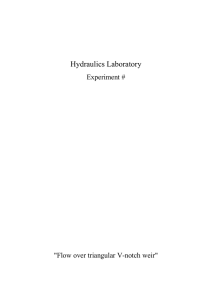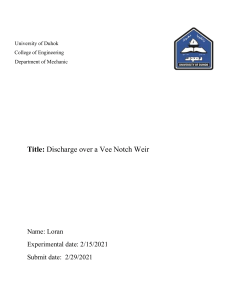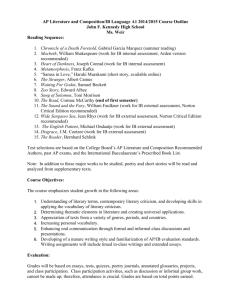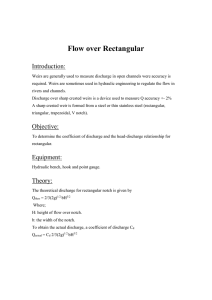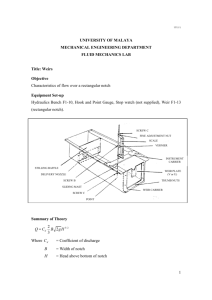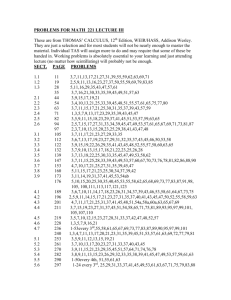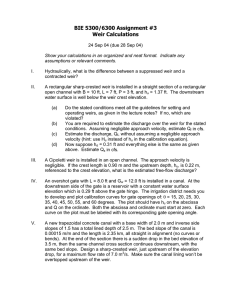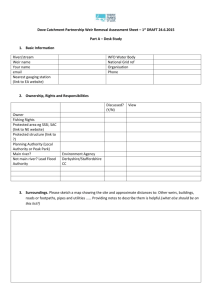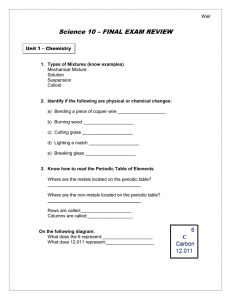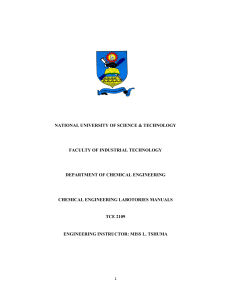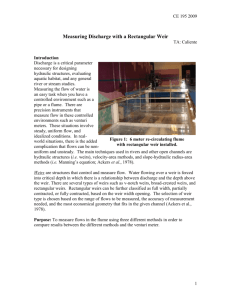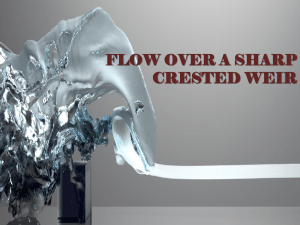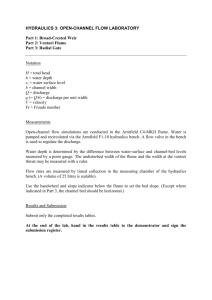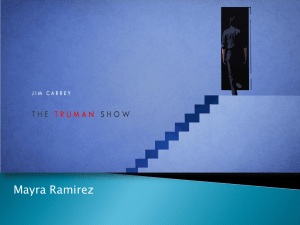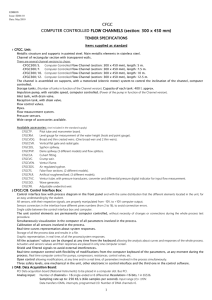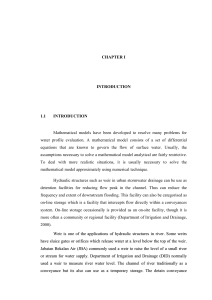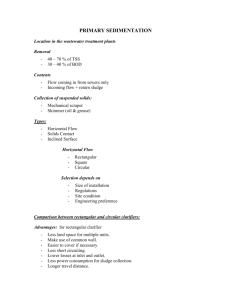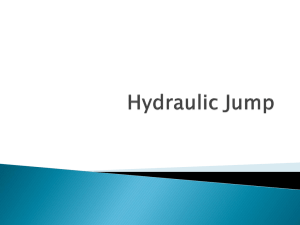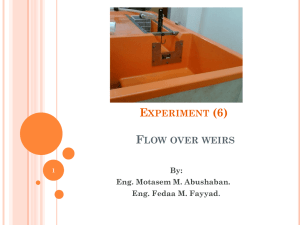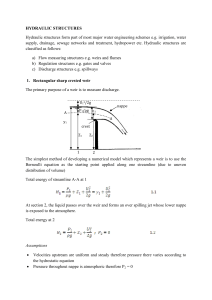53:071 Principles of Hydraulics Laboratory Experiment #1 Energy
advertisement
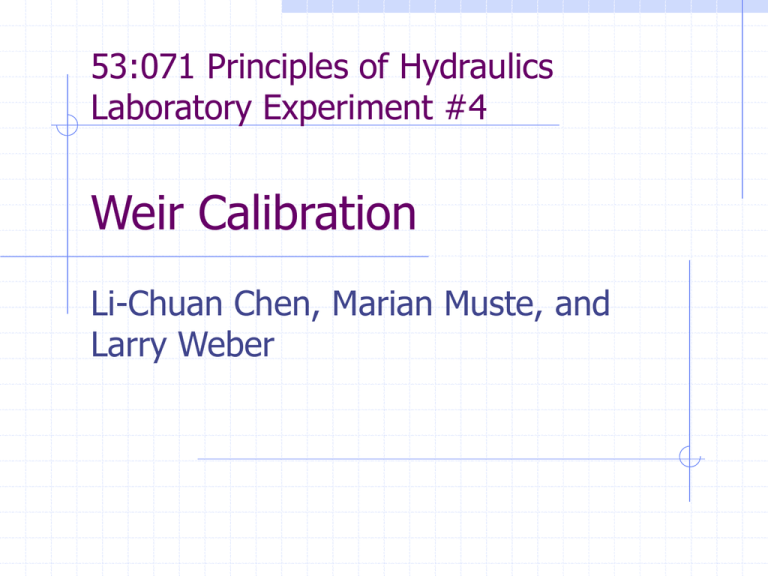
53:071 Principles of Hydraulics Laboratory Experiment #4 Weir Calibration Li-Chuan Chen, Marian Muste, and Larry Weber Objective To determine the head-discharge relationship of three different shapes of weirs, and to compare the experimental results with their corresponding analytical expressions. Principle U pstreamlevel h H dh V= 2gh N appe W eir crest P W eir V h 2 gh Principle H Q V (h)dA 2 g b(h) hdh kh n A 0 log( Q) log( kh ) n log( h) log( k ) n Slope Intercept Apparatus — Flume Q 2.04 h Apparatus — Weirs W E I R E X P E R I M E N T = 1 ' 0 " 9 0 .0 ° 1 0 3 /4 " 6 " 2 ' 0 " 2 ' 0 " R e c ta n g u la r C o n tr a c te d W e ir o 9 0T r ia n g u la rW e ir Procedures 1. 2. 3. 4. Insert the weir of the desired shape. Record the reference point of the weir. Set the appropriate discharge in the flume. Record the water surface elevation upstream of the weir 5. Repeat Steps 3 and 4 for four more discharges. 6. Repeat Steps 1 to 5 for two more weir shapes. Data Sheet Triangular 60 Discharge h (ft) Q (cfs) Ref. Point (ft) W.S. Elev. (ft) Weir Head (ft) Analysis Determine the discharge Q in the flume (using the side-contraction meter) and the head H on the weirs. Using several measured Q-H pairs, plot log Q versus log H. From the best-fit line to the experimental points, determine the kexp (the intercept) and nexp (the slope). Compare kexp and nexp with values indicated in the literature. Sample Result Further Considerations Derive, analytically, the head-discharge relationship for each of the weir shapes. If data seem to imply nexp ntheory, why?
